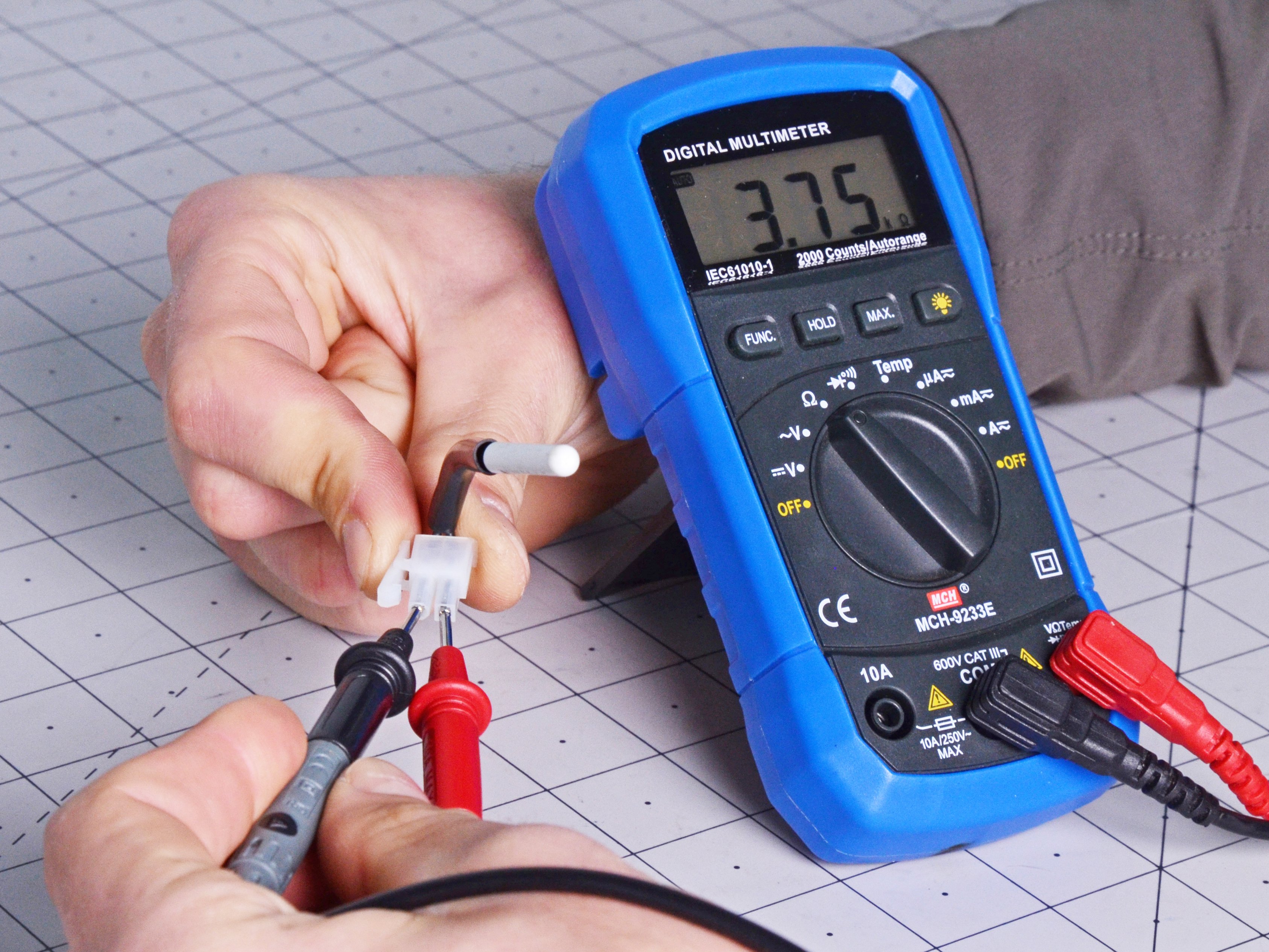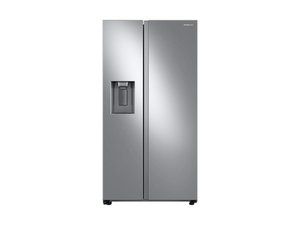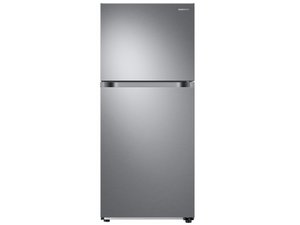The Basics
You may want to take a look at the component diagrams on our How a Refrigerator Works page, which will help you understand where all of the major components are so that you can more easily locate them.
It's also important to perform regular fridge maintenance. Keep it running well with these tips.
Before removing and replacing or continuity testing electrical components, power down the fridge. This will prevent damage to the components and prevent you from being electrocuted.
- If the fridge is pulled away from the wall, remove the plug.
- Otherwise, find the fridge’s circuit breaker in your breaker box and turn the circuit off.
- Check that the lights are off in in the fridge when you open the door
Incorrectly Loaded or Overloaded Fridge
The evaporator fan blows cold air around the freezer. Too much food or incorrectly placed food will block the vents and prevent proper temperature regulation. The refrigerator vents allow for airflow between the fridge and freezer compartments. The following tips may help your freezer maintain a safe temperature:
- Locate your evaporator fan and move frozen items further away.
- Unblock the vents. A rule of thumb for frost prevention is to stock enough food to fill the freezer while keeping an inch of space between the food and the walls.
Incorrect Thermostat Setting
If your refrigerator has a knob or dial that sets the temperature, check it out. Verify it is set on cold and hasn't been bumped or shifted positions. Use a thermometer if you don't have a digital thermostat display. The freezer should be around 0°F
Reset Power
You should try to reset the power to your fridge. Make sure it has power to it by checking that the light inside the fresh food compartment comes on when the door is opened.
- Unplug your refrigerator. If the plug is too hard to reach, switch the circuit breaker off.
- Wait 5 minutes before returning power to the fridge.
- This will reset your fridge but some modes need to be manually disabled. (see the next step)
- Monitor temperature over the next 24 hours.
Causes
Door seals are gaskets for your fridge, and as they age and fall apart, cool air escapes through the cracks in door seals.
- Inspect your door seals, then clean or replace if necessary.
At the backside and bottom of your fridge are the condenser and its coils. Refrigerant passes through the coils which dissipates heat during the cooling cycle. As dust and debris pile onto the coils, the fridge becomes less efficient and must work hard to cool down.
- Pull your fridge out and inspect the coils.
- Your fridge may have an anti-tip bracket and can only be removed by pulling straight out from the wall.
- Clean dust off condenser coils and fan with a stiff brush and vacuum.
- Work carefully during this task and avoid bending or damaging the tubes.
A buildup of interior frost and ice can affect your unit's efficiency. Check the rear of the freezer compartment and look for frost or ice build up. If it's been a year or more since you last defrosted the freezer, consider performing a forced defrost or manual defrost.
- Unplug or power down your unit
- Unload the freezer and carefully remove the ice.
- Lay towels in the bottom of the machine, and then place bowls of hot water or a hairdryer/heat gun — carefully — in a position to melt the ice.
- Completely dry the freezer before powering back on.
If you have an auto-defrost unit, thick ice accumulation suggests some part of the defrost cycle has failed.
There might also be a whirring or grinding sound coming from the rear of the freezer. This could be ice interfering with the evaporator fan.
The condenser fan draws air over the compressor and through the condenser coils. If the fan motor isn't working normally, then the fridge won't cool properly.
- Check the fan blade for physical obstructions
- Rotate the fan by hand. If it doesn't spin freely, replace the motor.
- If it spins freely, test the motor for continuity. Replace the condenser fan motor if the continuity test fails.
The evaporator fan draws air over the cooling coils and circulates this air within the fridge and freezer compartments. The evaporator fan should be running as long as the compressor motor is running. If your fridge only has one evaporator fan motor, it's located in the freezer compartment. When the fan fails, it won't circulate the cold air to the refrigerator. In this event, the freezer may still get cold while the refrigerator stays warm.
- Check the fan blade for physical obstructions.
- Note: The fan may not be running if it's iced or frozen. Defrost the freezer, and see if the fan spins freely.
- Rotate the fan by hand. If it doesn't spin freely, replace the motor.
- If it spins freely, test the motor for continuity. Replace the evaporator fan motor if the continuity test fails.
- An unusually noisy motor should be replaced as well.
Newer freezers may use brushless fans, which are not easily taken apart or tested for continuity.

- 5 minutesEasy
Another problem that prevents your freezer compartment from getting cold enough is a faulty thermistor. The thermistor is a sensor that monitors the air temperature. It is connected to the control board. If the thermistor is defective, the refrigerator does not cool (or may cool continuously).

Grab a multimeter and continuity test the thermistor. You can measure the thermistor if it is either at room temperature (70°F or 21°C) or in ice water. For ice water: Place the thermistor into a cup with ice, water, and a teaspoon of salt. This will ensure 32°F (0°C) temperature. The following are common Samsung Thermistor Values.
At room temperature (70°F, 21°C), If the value isn't around 5.8kΩ replace the thermistor.
In the Ice Water Salt Mix, if the value isn't around 13.2KΩ replace the thermistor.
These values vary, so you may want to verify the actual values for your model number, if possible, before replacing your thermistor. Some fridges may have different values, but the two above are very common.

- 5 minutesEasy
On a few Samsung refrigerators, the temperature control system consists of a thermostat that acts as a sensor for the fridge. It is a temperature-controlled switch. Refrigerators with this sort of control usually have just a knob. When the temperature is above the set point, the thermostat will allow the compressor to start, along with any fans.
- Turn the thermostat from the lowest to the highest levels and listen for a click.
- If you don’t hear a click, then it likely needs replacing.
- Locate and test the thermostat for continuity. A resistance value between 0‑1Ω is acceptable.
- Values outside of this range suggest the part will need replacing.

- 5 minutesEasy

Find compatible replacement parts for your Samsung Refrigerator. All parts and fix kits are backed by the iFixit Quality Guarantee.
The start relay is a small device mounted to the side of the compressor. It provides power to the run winding, along with the start winding, for a split second at startup to help get the compressor going. If the start relay is defective, the compressor may run intermittently or not at all, and the refrigerator will not get cold enough. The start relay should be replaced if defective.
- Test Start Relay. View this video and verify if your start relay is functioning.
- Replace the relay if it fails the testing. If it passes, move on to testing the compressor.
If the capacitor has failed, the compressor will not be able to start and run as it should. Most newer refrigerators use a run capacitor, which stays in the circuit and improves the energy efficiency of the compressor. Some older refrigerators may have a start capacitor, which functions just at startup. These are not as common.
You may be able to tell what kind you have by looking at a couple of factors. Many run capacitors are polymer-type capacitors with a small rectangular block shape. There are cylindrical run capacitors, but they are less common (some LG fridges have them). The capacitance values of run capacitors tend to be smaller on refrigerators, something between 10 and 22µF (µF stands for microfarads, also abbreviated MFD).

A Typical Run Capacitor
Safely remove the capacitor and discharge with a discharge tool.
On smaller capacitors, you can use a screwdriver with an insulated handle to discharge it. But be careful as capacitors increase in size.
Test the capacitor with a capacitance meter; replace it if the value measured is outside the tolerance listed on the capacitor (usually +/- 5-10%).
A very quick functional check for a capacitor is to set your multimeter to the continuity function with the beeper on. Connect the capacitor to the leads for a few seconds. Then, swap the leads to the opposite terminals. If the capacitor is at least storing some charge, you should get a short beep. This will not tell you if the capacitance is correct, only that the capacitor will store charge.
When you replace a capacitor, get the exact type of the existing capacitor and the same capacitance value. You can safely use a capacitor with the same or higher voltage rating than the original.
If everything checks out, go to the next item.

- 2 - 15 minutesModerate
The compressor is your fridge's workhorse. By pressurizing the refrigerant, the compressor enables the evaporator to chill air. If the compressor is very noisy when you start it up, that's a bad sign, but give it 90 seconds or so to stabilize and get quieter.
If it isn't running at all:
- Test the compressor for continuity. Resistance values vary based on the compressor, so view this video. Values outside of the range or a short to ground will mean replacing the compressor, which is a costly repair. If your fridge is more than a few years old you're better off replacing the fridge instead of just the compressor.

Find compatible replacement parts for your LG Refrigerator. All parts and fix kits are backed by the iFixit Quality Guarantee.
Excessive vibration and aging connections in the pressurized refrigerant loop can cause an environmentally harmful release of refrigerant. There are a few ways you can check if this is the case.
Is the compressor continually running to keep the fridge cool? A low refrigerant pressure results in cooling problems such as the freezer being too warm. If the freezer's coils are not frosting over completely this also suggests a leak or a blockage in the cooling system.
- Inspect for oily residues on condenser coils and on or around the compressor. The refrigerant is mixed with oil which lubricates the compressor. Oil suggests that there's a refrigerant leak.
A blockage can be caused by tilting or transporting a fridge on its side. The lubricating oil at the bottom of the compressor can enter the refrigerant lines and cause the compressor to burn out. A blockage in the system can cause ice build-up on the other side of the restriction in the refrigerant flow path.
- An appliance technician can measure the low and high side pressures of the sealed refrigerant system. The pressures will indicate if the amount of refrigerant is correct and also if there are any restrictions in the sealed system.
Finally, if the refrigerator won’t get cold enough, the main control board might be defective. This is not common. Check the defrost system, cooling fans, and cooling controls first.
- If all other systems seem fine, replace the main control board.

- 10 - 20 minutesModerate








